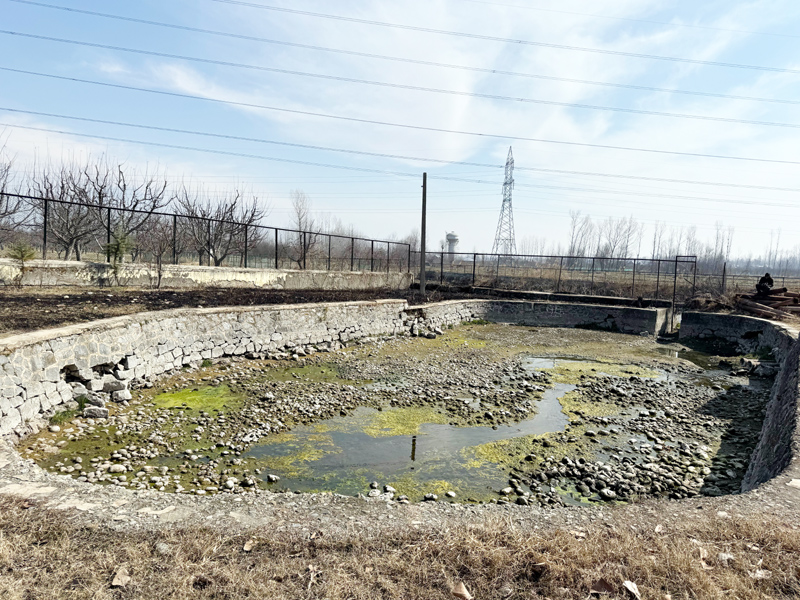Omar calls for united action to tackle the crisis
Suhail Bhat
Srinagar, Feb 19: A significant water shortage is emerging in Kashmir due to a continued rainfall shortfall that has resulted in the drying up of numerous springs and vital water sources, leading to inconsistent water supply throughout the Valley.
CLICK HERE TO WATCH VIDEO
Residents are struggling with inconsistent water supply as water levels continue to fall. The depletion of traditional springs in various regions has raised serious concerns about the escalating issue.
This crisis has been developing over recent years, with this winter being particularly alarming. Kashmir has experienced a 70% reduction in rainfall, even during ‘Chillai Kalan’ (December 21 to January 30), the most severe winter period when snow and rain usually replenish water supplies. The absence of precipitation has resulted in water shortages even in winter—a troubling trend.
Consequently, many traditional springs have either dried up or drastically reduced in water volume, exacerbating the crisis. One of the most impacted is the Achabal spring in the Mughal Garden of Anantnag, which has almost entirely dried up for the first time, affecting countless villages reliant on it.
Similarly, Bulbul spring in the Newa area of South Kashmir is experiencing dangerously low water levels, affecting supply to nearly 30 villages, including Newa, Parigam, Narbal, Harkipora, and Hassanwani. “We used to receive six lakh gallons of water from this spring, but now we barely get one lakh gallons—not enough to fulfill the needs of residents. The situation is critical,” remarked a Jal Shakti Department employee.
The crisis also involves the Jhelum River, Kashmir’s main water source, which is flowing at historically low levels. At Sangam, the river is only 0.99 feet deep, impacting water availability, especially in northern Kashmir. Numerous villages, such as Jetty, Dangerpora, Saloosa, Pakipora, and Inderpora, are among the hardest hit. “We don’t receive adequate tap water and rely on tankers, which are always insufficient. We have faced shortages in the past, but this year is the worst,” said Imtiyaz Ahmad, a resident of Saloosa.
Additionally, excessive sand mining from the Jhelum River has intensified the issue. A Jal Shakti Department official cautioned that uncontrolled extraction has modified the river’s structure, creating deep pits that capture water and establishing barriers that hinder natural flow. “The unregulated sand mining, particularly with heavy machinery, has resulted in large craters in certain areas, holding excessive amounts of water. This excessive extraction has also formed unnatural barriers, obstructing the river’s flow,” the official clarified.
With rising alarm, Chief Minister Omar Abdullah took to social media platform X to address the situation. “J&K is facing a water crisis this year. This isn’t a new issue; it has been accumulating for several years. While the Government needs to take a more proactive stance on water management and conservation, it cannot tackle this issue alone,” Abdullah stated.
He encouraged the public to reassess their water usage practices. “I will be reviewing the measures that the Jal Shakti Department plans to implement to combat the crisis. Over the coming months, I will also engage with the people of J&K to explore what we can collectively do,” he added.
Chief Engineer of the Jal Shakti Department, Braham Jyoti Sharma, acknowledged the challenges posed by falling water levels but asserted that efforts are being made to manage the situation. “While the water supply has been affected, we are utilizing water tankers to address the demand in areas facing severe shortages,” Sharma mentioned.
Nevertheless, he called on residents to use water wisely and minimize waste to avoid further pressure on the already dwindling resources.


Leave a Reply